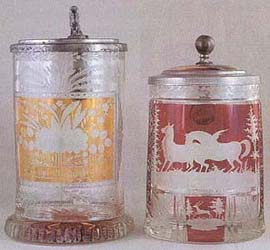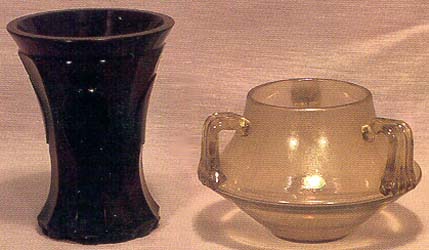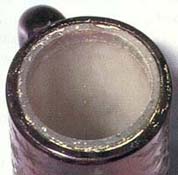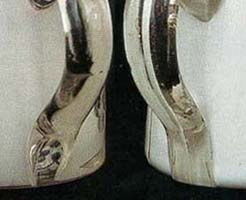 |
 |
by Ron Fox
There are numerous ways to add color in the manufacture of glass. The most common method is to mix different oxides into the batch to give it a uniform color. This is done to produce glass such as milk glass, cranberry, cobalt, amber, opaline, etc. There are basically three different types of colored glass: transparent, translucent and opaque. Transparent glass allows light to pass through without diffusion. Objects can be seen through it clearly. Translucent glass allows light to pass through in a diffused manner. Since only limited light passes through, objects appear unclear. Opaline glass falls into this category. Opaque glass is solid-colored glass that allows little or no light to pass through.
Staining
Another glass-coloring method is called staining. This is accomplished after a metallic oxide is applied to the body and the glass is reheated. The oxide provides the color and leaves a thin layer on the surface of the glass. By scratching, cutting, or engraving this layer, the clear glass underneath is revealed. This can create many different effects commonly called cut-to-clear. The colors created are quite bold and give the same appearance as solid-colored glass or overlays.
|
|
Overlay-Flashed
Another coloring method is the overlay process. This is achieved when the glass blower has a ball of glass on the end of his pipe and inserts that ball into a pot of different-colored glass inside the furnace. This second color will then encase the first layer. This can be done several times to achieve numerous layers. This overlay process can be done with freehand-blown or mold-blown pieces, but is usually done with mold-blown.
|
|
Lustre
A lustre is achieved by tinting the exterior of the glass with a metallic oxide vapor. A small amount of the oxide is inserted into the kiln in a special container or a thin layer is painted or sprayed onto the body. The heat in the kiln transforms the oxide into a gas which is trapped in the kiln and coats the clear glass surface with a thin layer of iridescent color.
Cased
 |
stein showing the two equal layers of glass. |
Enamel Overlay
 |
overlay stein; Right - handle attachment on glass overlay stein. |
__________
*Reprinted from The Beer Stein Journal, February 1995, by permission from Gary Kirsner Auctions.